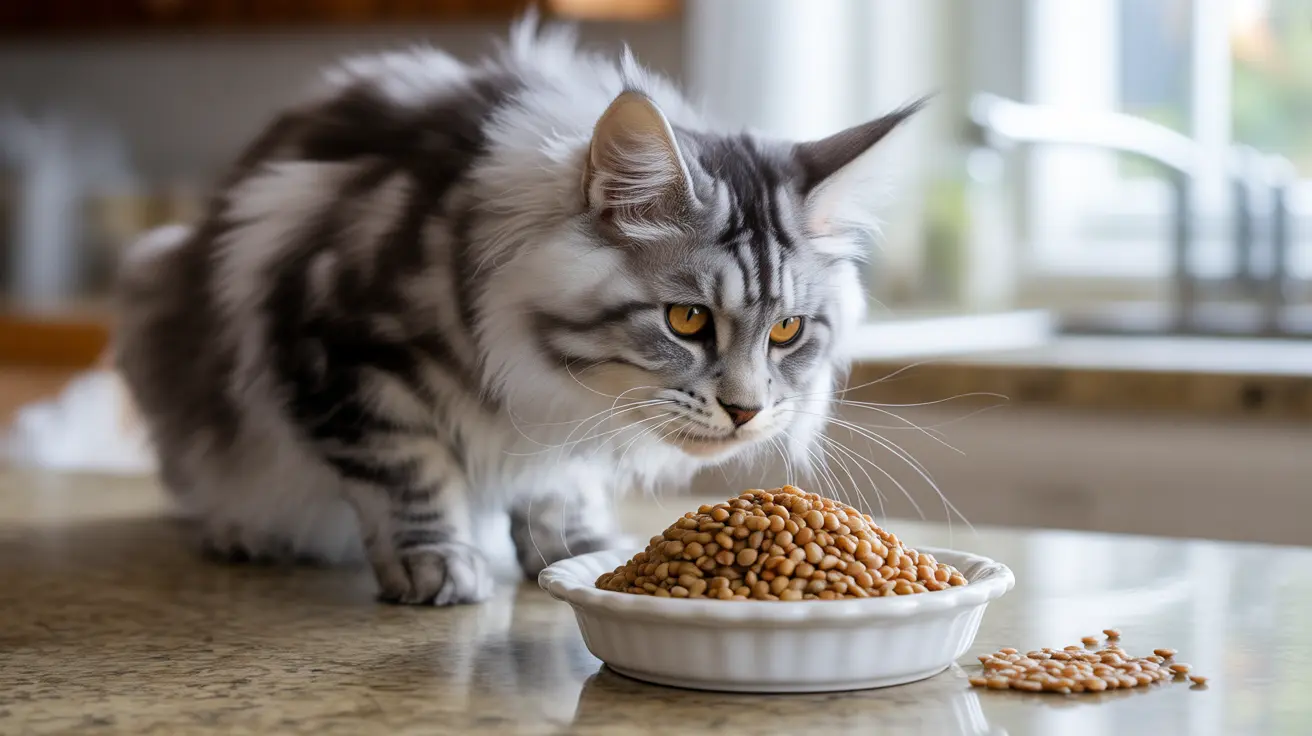Understanding Cats' Nutritional Needs
Before diving into the specifics of lentils, it's crucial to understand that cats are obligate carnivores. This means they require animal-based proteins and nutrients to thrive. Unlike omnivores or herbivores, cats' digestive systems are specifically designed to process meat, and they lack certain enzymes needed to efficiently digest plant materials.
Safety of Lentils for Cats
Lentils are not toxic to cats, and when properly prepared, they can be safe for occasional consumption. However, their safety comes with several important caveats. Cats should only consume plain, well-cooked lentils without any seasonings, spices, or additives that could be harmful to their health.
Potential Benefits of Lentils
While not essential for cats, lentils do offer some nutritional components:
- Dietary fiber that may help with digestion
- Plant-based proteins (though not as complete as animal proteins)
- Various minerals and vitamins
- Low-calorie content compared to many commercial treats
Risks and Limitations
Despite being safe in small amounts, lentils present several potential risks for cats:
- Digestive issues due to high fiber content
- Difficulty processing plant proteins
- Presence of antinutrients that can interfere with mineral absorption
- Risk of malnutrition if used to replace animal proteins
Proper Preparation Methods
If you choose to offer lentils to your cat, follow these guidelines:
- Thoroughly cook the lentils until soft
- Avoid all seasonings, including salt
- Never serve raw or undercooked lentils
- Allow lentils to cool completely before serving
- Start with tiny portions to monitor tolerance
Lentils in Commercial Cat Food
Some commercial cat foods include lentils as a supplementary ingredient, particularly in grain-free formulations. However, they typically appear in small amounts and alongside primary animal protein sources. It's important to note that lentils in commercial cat food have been properly processed and balanced within the overall nutritional profile.
Best Practices for Feeding Lentils
If you decide to introduce lentils to your cat's diet:
- Limit portions to no more than a teaspoon
- Offer them no more than once per week
- Monitor your cat for any adverse reactions
- Consult with your veterinarian first
- Never use lentils as a meal replacement
Frequently Asked Questions
Can cats safely eat lentils, and how much is too much?
Cats can safely eat small amounts of plain, well-cooked lentils. A safe portion is no more than a teaspoon, offered no more than once per week. Any more than this could lead to digestive issues.
Why are lentils not recommended as a regular part of a cat's diet?
As obligate carnivores, cats require animal-based proteins and nutrients that lentils cannot provide. Their digestive systems are not designed to process large amounts of plant matter efficiently.
What are the health risks if my cat eats too many lentils?
Overconsumption of lentils can lead to digestive upset, bloating, gas, diarrhea, and potential nutrient deficiencies if used to replace animal proteins in the diet.
How should I prepare lentils if I want to give them to my cat?
Cook lentils thoroughly without any seasonings, spices, or additives. Allow them to cool completely before serving, and only offer plain, soft lentils in small amounts.
Are lentils included in commercial cat foods, and do they provide nutritional benefits?
Some commercial cat foods include lentils as a supplementary ingredient, particularly in grain-free formulations. While they provide some fiber and minerals, their primary role is as a complementary ingredient rather than a main source of nutrition.
The bottom line is that while cats can eat lentils in moderation, they should never be a significant part of their diet. Focus on providing your cat with high-quality, meat-based protein sources for optimal health and nutrition.






